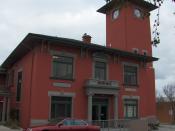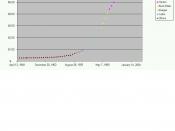Wong Tze Siang. 22972668.
Executive Summary
By 2015, Pacific Grove (hereafter referred as "PG") will reach a 55% ratio of interest/bearing debt to total assets and their equity multiplier will be 2.77 which is consistent with Peterson's expectation. I must be noted that over the next 4 years, PG's interest coverage is forecasted to increase suggesting that they will gradually be building up more earnings to cover its debt payment which is a good sign for the banks.
Dilution of shares seems have to have little impact on the EPS of PG shares. Therefore, it is expected that PG shareholders would accept the issuing of shares. However, this information has to be clearly communicated by PG's management to its shareholders in order to gain support of this share issuance.
It is also fairly safe to say that it is a good decision for PG to enter into the television deal.
It is noted that the project would yield a positive NPV at 10%, 15% and 20% discount rates. The project also requires only a modest initial investment
The loss of confidence in credit by the overall market had left PG with no choice but to obey the demands of their bank as it would be difficult to obtain credit from other institutions during the time. In addition to that PG was also in the midst of a bearish stock market. This is justified by the fact that investors were anxious about the market and only willing to offer $27.50.
A number of recommendations are given to help PG reduce their debt levels. These include improving their supply chain efficiency and forecasting so that they can reduce their inventory levels, negotiating with suppliers to reduce the rate they are paying for inventory and can extending the length of their accounts payable.


